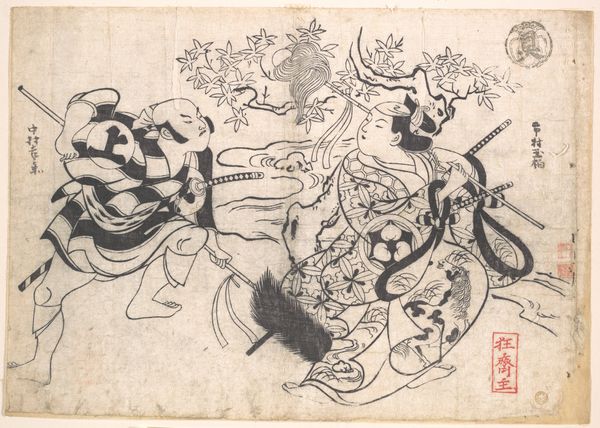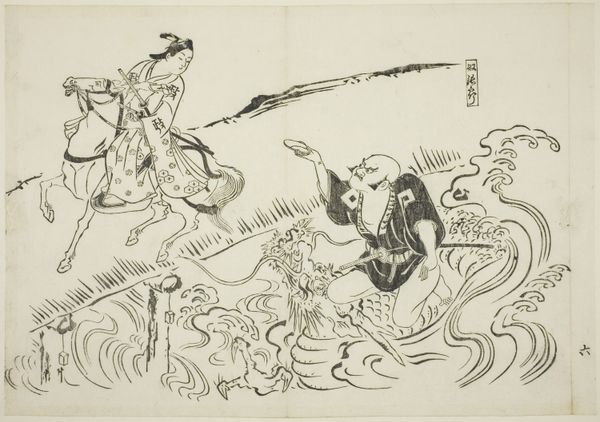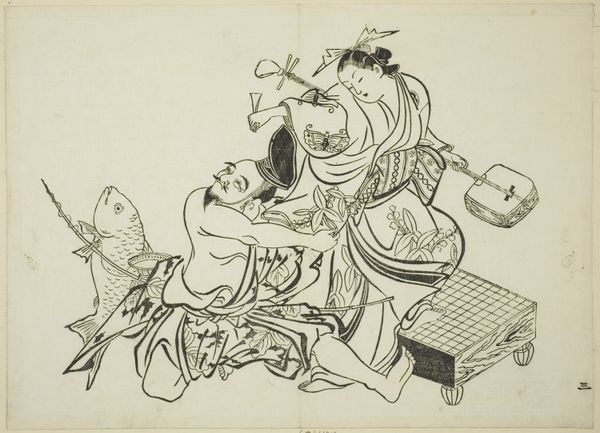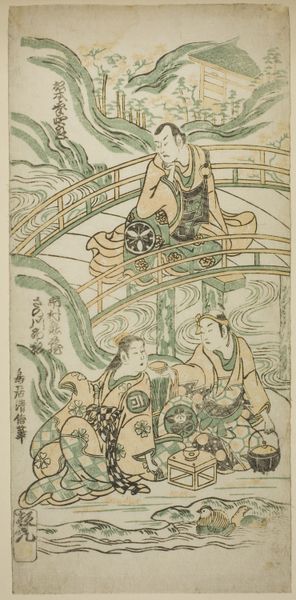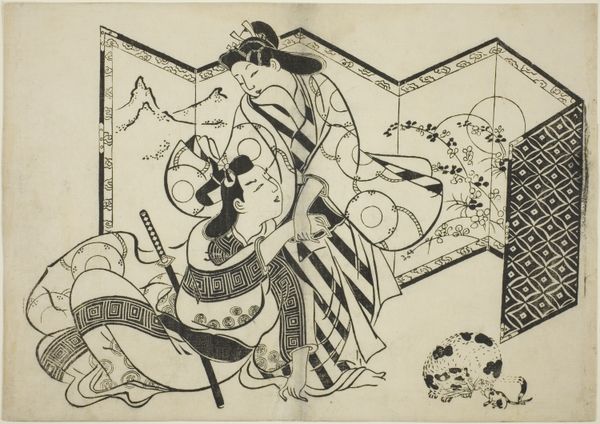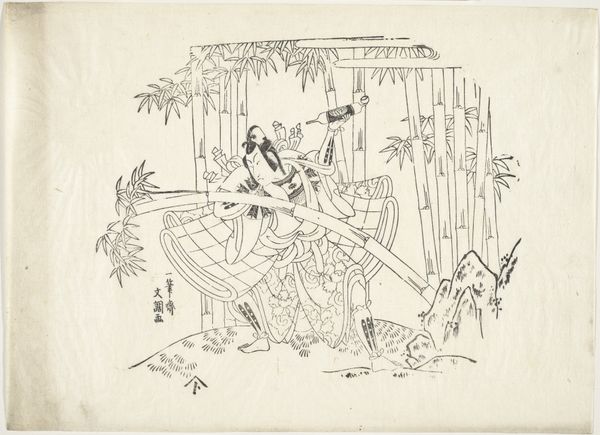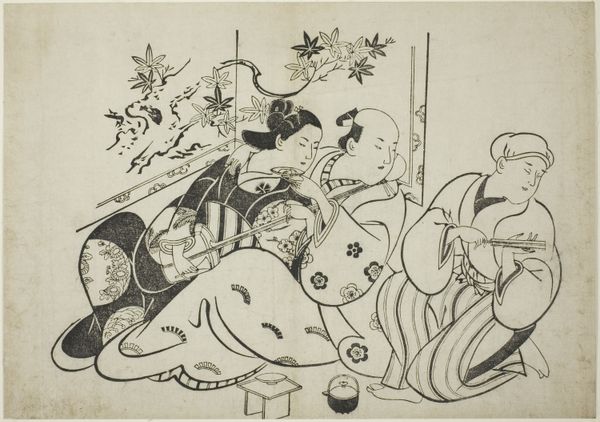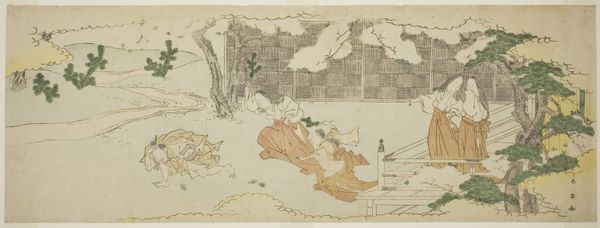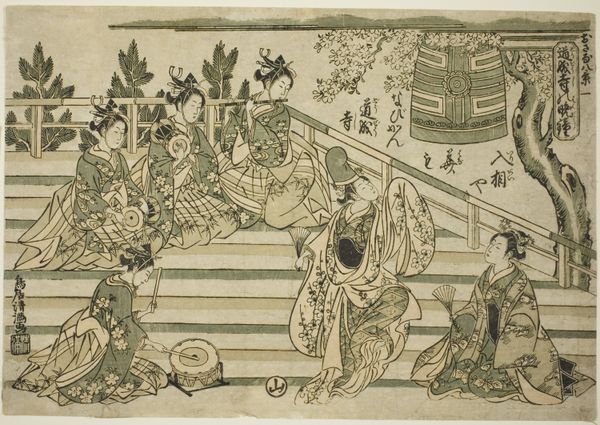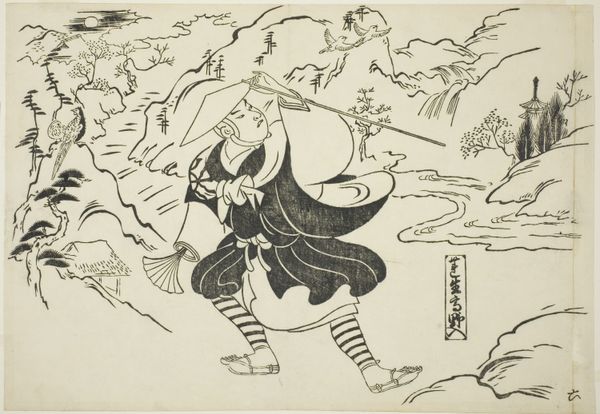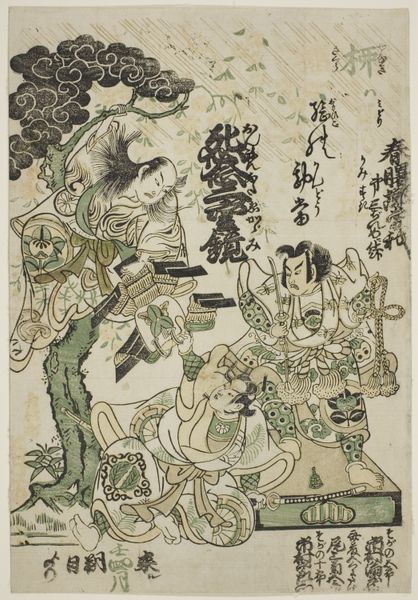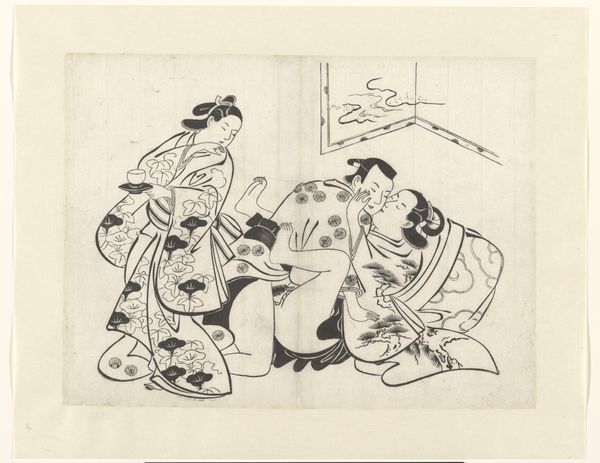
The Crossing of the Tanabata Boat (Tanabata no towataru fune) c. 1715
0:00
0:00
drawing, print, ink, woodblock-print, woodcut
#
drawing
#
ink drawing
#
narrative-art
# print
#
asian-art
#
ukiyo-e
#
ink
#
woodblock-print
#
woodcut
Dimensions: 26.7 × 38.4 cm
Copyright: Public Domain
Editor: Okumura Masanobu's woodblock print, "The Crossing of the Tanabata Boat," created around 1715, shows three figures in a boat. It feels quite dreamlike, maybe even melancholic, given the muted tones. How would you interpret the scene? Curator: It’s interesting to see how Masanobu visualizes the Tanabata legend here. Remember, Ukiyo-e prints like this were not just art, they were popular culture. Consider how this print, and its dissemination, helped to shape the *public understanding* of this romantic myth in 18th century Japan. What do you notice about the depiction of the women themselves? Editor: They're elegantly dressed and seem focused on scholarly activities. One is writing, another reading, the third maybe poling the boat? There’s a lot of emphasis on literacy here. Curator: Exactly. This elevates the female figures beyond mere romantic figures in a tale of love. It links them to ideals of education and refined leisure, aspirations perhaps, for the merchant class buying these prints. What do you think this suggests about the intended audience of this piece and its reception? Editor: So, the image speaks not just of the Tanabata myth itself, but to the cultural aspirations of its consumers and how art creates aspiration? Curator: Precisely! The intersection of romantic mythology, literacy, and socio-economic aspirations—all framed by the commercial context of ukiyo-e. That’s how a historian might read this deceptively simple print. Editor: That completely shifts how I view it. Now it seems like so much more than just an illustration of a folktale. Thank you!
Comments
No comments
Be the first to comment and join the conversation on the ultimate creative platform.
